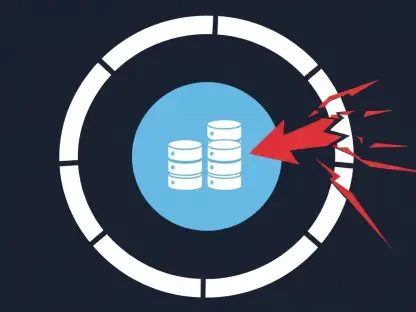Open source software has long been hailed for its flexibility, transparency, and cost-effectiveness. However, the evolving landscape of cyber threats has laid bare significant security gaps in traditional open source projects. The recent Log4Shell vulnerability serves as a stark reminder of the need for systemic changes. This article delves into these security challenges and the crucial need for modernization within the open source community. We will discuss the importance of upgrading legacy projects, addressing the cybersecurity skills gap, and fostering a more collaborative environment.
The Imperative to Modernize Traditional Open Source Projects
Responding to Modern Vulnerabilities
The Log4Shell vulnerability has highlighted the pressing need for modernizing traditional open source projects. Legacy systems, while functional, often lack the robust security frameworks necessary to combat contemporary threats. These vulnerabilities pose significant risks that, if unaddressed, can lead to catastrophic security breaches. The recent exploit, which allowed attackers to remotely execute arbitrary code, showcased specific weaknesses in traditional open source projects, emphasizing the necessity for modernization.Moreover, outdated components and libraries commonly used in legacy projects are not designed to withstand today’s sophisticated cyber threats. Maintaining older systems without modernizing them not only increases the risk of vulnerabilities but also creates a false sense of security. The Log4Shell incident is a wake-up call, reminding organizations of the continuous need to evolve their security strategies. It underscores the urgency of integrating modern security measures to protect open source projects from potential exploits in the future.
Emily Fox’s Perspective
Emily Fox, a senior principal software engineer at Red Hat, emphasizes that current procedures from existing foundations are inadequate for providing the necessary security expertise and support. According to Fox, this lack of robust procedures places heritage projects at a significant disadvantage, making it challenging for them to meet modern security standards effectively. The existing processes often fail to include the latest advancements in security practices, leaving traditional projects vulnerable to contemporary threats.Fox advocates for the development of a more robust framework to support these projects adequately. The technical oversight required to maintain security in legacy systems is often missing, leading to gaps that can be exploited by malicious actors. By modernizing the foundational procedures, heritage projects can be brought up to current security standards, ensuring they are better equipped to handle today’s complex threat landscape. Therefore, adopting a comprehensive approach to integrating security expertise into traditional projects is imperative for safeguarding open source communities.
Bridging the Security Expertise Gap
A skills gap within cybersecurity further complicates efforts to modernize. Identifying and training individuals in the programming languages crucial for maintaining next-generation projects has been overlooked. This gap must be addressed to effectively bridge the divide between modern security expectations and traditional project capabilities. Without the necessary expertise, security vulnerabilities will continue to plague open source projects, making it difficult to implement the required updates and patches effectively.Additionally, investment in professional development and continuous education is crucial to closing this skills gap. Organizations must prioritize the recruitment and training of cybersecurity professionals skilled in legacy programming languages and frameworks. By fostering a culture of learning and development, the open source community can ensure a steady pipeline of skilled professionals capable of maintaining and modernizing these projects. Addressing the skills gap head-on will enable open source projects to meet contemporary security challenges more effectively.
Enhancing Communication Within Open Source Projects
Unidirectional Communication Flow
One of the underlying issues exacerbating open source security challenges is the unidirectional flow of communication within these projects. Currently, communication typically moves from developer to maintainer, or through pull requests, rather than fostering a bi-directional dialogue. This limited communication framework hinders the ability to address security concerns promptly and efficiently, leading to potential gaps in understanding and addressing vulnerabilities.Bi-directional communication is essential to creating a more responsive and adaptable security environment. Encouraging open, transparent dialogue between developers and maintainers can lead to quicker identification and resolution of security issues. This collaborative approach ensures that all stakeholders are on the same page, fostering a more dynamic and resilient open source ecosystem. Hence, rethinking communication strategies within open source projects is necessary to enhance security and overall project health.
Leveraging Contributor Expertise
Maintainers need to leverage the skills of contributors who make pull requests. Encouraging active collaboration and feedback from all parties can significantly enhance the security features of open source software. This collaborative approach ensures that valuable insights and skills are utilized effectively, leading to a more robust and secure codebase. Contributors bring diverse perspectives and expertise that can be invaluable in identifying and mitigating potential security risks.Moreover, creating an environment where contributors feel valued and heard can lead to increased participation and innovation. When maintainers actively engage with contributors, it fosters a sense of community and shared responsibility. This not only improves the security posture of the project but also attracts more skilled individuals to contribute. By harnessing the collective knowledge and experience of the community, open source projects can achieve higher security standards and drive continuous improvement.
Enterprise Responsibility
Enterprise users have a pivotal role to play in this collaborative effort. By sharing their integration experiences, they can help maintainers understand real-world applications and challenges. This two-way communication aids in communal improvement, benefiting the entire open source ecosystem. Enterprises often possess valuable insights into how open source software performs in diverse and complex environments, making their feedback crucial for enhancing the project’s security and functionality.Furthermore, enterprises must adopt a proactive approach to contributing back to the community. This involves not only providing feedback but also dedicating resources to assist in the development and improvement of open source projects. By doing so, they can ensure the software they rely on is secure, stable, and continuously evolving to meet modern requirements. This collaborative relationship between enterprises and the open source community is essential for building a sustainable and resilient ecosystem.
Addressing the Cybersecurity Skills Gap
Talent Deficiency in Traditional Projects
There is a noted deficiency in the depth of talent available for traditional projects. The lack of focus on training individuals in essential programming languages has stalled progress. Modernizing open source projects requires a concerted effort to identify and develop the necessary skills. Bridging this talent gap is critical to ensuring that heritage projects can meet contemporary security standards and remain viable in the long term.To address this deficiency, it is essential to create targeted training programs and initiatives aimed at developing expertise in legacy technologies. These programs should focus on providing hands-on experience and practical knowledge to prepare individuals for the unique challenges of maintaining and modernizing traditional open source projects. By investing in the development of specialized skills, the open source community can build a robust talent pool capable of addressing current and future security needs.
Training and Resources
Incorporating current materials, resources, and guidance into existing projects is imperative. A structured approach to training and resource allocation can mitigate the talent gap, ensuring that traditional projects are not left behind in terms of security. This involves updating documentation, providing comprehensive tutorials, and offering mentorship programs to help new contributors gain the skills needed to support and enhance legacy projects.Additionally, collaboration with educational institutions and training providers can help create a pipeline of skilled professionals ready to tackle open source security challenges. By partnering with academia and industry experts, the open source community can develop tailored curricula and certification programs that address the specific needs of traditional projects. These efforts will ensure a continuous flow of qualified individuals capable of maintaining and securing open source software in an ever-evolving threat landscape.
Role of Foundations and Organizations
Foundations and organizations must take a proactive stance in addressing the skills gap. They need to implement programs aimed at developing cybersecurity expertise within the open source community. By doing so, they can ensure a steady flow of skilled professionals equipped to handle modern security challenges. These initiatives should focus on providing education, resources, and support to individuals and teams working on traditional projects.Moreover, establishing mentorship and apprenticeship programs can help bridge the gap between experienced professionals and newcomers. By fostering a culture of knowledge sharing and continuous learning, foundations and organizations can create an environment where individuals feel supported and empowered to develop their skills. This collaborative approach will not only enhance the security of open source projects but also build a stronger, more resilient community capable of facing future challenges.
Encouraging a Collaborative Approach
Fostering Bi-Directional Dialogue
Creating a more interactive and collaborative environment requires fostering bi-directional dialogue between developers, maintainers, and users. This open communication channel enables continuous feedback and improvement, enhancing the overall security posture of open source projects. Active participation from all stakeholders is crucial for identifying potential vulnerabilities and implementing effective solutions promptly.Moreover, fostering a culture of transparency and openness can lead to a more engaged and motivated community. When contributors feel their input is valued and their concerns are addressed, they are more likely to participate actively and consistently. This collaborative approach not only improves the quality and security of the software but also builds a strong sense of community and shared responsibility among all participants. By prioritizing open communication, the open source community can drive innovation and improvement continuously.
Shared Responsibility Model
Open source software, like a “puppy,” requires continuous care and input from its users. This analogy highlights the shared responsibility model that open source projects necessitate. Users must contribute insights and lessons learned back into the projects to help enhance communal security measures. This ongoing commitment is critical for maintaining and improving the overall health and security of open source software.Furthermore, treating open source projects as a collaborative effort ensures that the burden of maintenance and security is distributed among a larger group. This shared responsibility model encourages a more sustainable approach to software development, where users are actively involved in the evolution and improvement of the projects they rely on. By fostering a sense of ownership and accountability, the open source community can create a more resilient and secure ecosystem.
Building Trust and Community Resilience
Trust and community resilience are fundamental to the success of open source projects. Historically, building trust within the community was more of a focus than responding to specific threats. In the wake of high-profile cyberattacks like SolarWinds, there is a growing need to reevaluate and evolve security practices to build a resilient ecosystem. This involves creating a strong foundation of trust and collaboration that can withstand and respond to emerging threats effectively.Developing robust security practices and protocols is essential for building trust within the community. When users and contributors feel confident in the security measures in place, they are more likely to engage and contribute positively. Additionally, fostering a culture of resilience requires continuous learning, adaptation, and improvement. By staying vigilant and proactive, the open source community can build a strong, resilient foundation capable of navigating the complexities of the modern cybersecurity landscape.
A New Wave of Innovation
Reassessing Security Practices
The evolving threat landscape necessitates a reassessment of existing security practices. Cybersecurity professionals must innovate and adapt their strategies to tackle modern vulnerabilities effectively. This shift from reactive to proactive security measures is essential for the future of open source projects. By adopting a forward-thinking approach, the open source community can anticipate potential threats and implement preventative measures to mitigate risks.Continuous evaluation and improvement of security practices are crucial for staying ahead of emerging threats. This involves regularly updating policies, protocols, and tools to ensure they align with the latest advancements in cybersecurity. By fostering a culture of continuous improvement, the open source community can build a more secure and resilient ecosystem capable of withstanding the complexities of modern cyber threats. Additionally, collaboration with industry experts and cybersecurity professionals can provide valuable insights and guidance for enhancing security measures.
Evolving Strategies
Developing and implementing new strategies tailored to modern threats is crucial. This evolution will drive a new wave of innovation within the open source community, ensuring that projects remain secure and resilient. By embracing innovative approaches and technologies, the community can enhance its ability to detect, respond to, and mitigate potential vulnerabilities effectively. This proactive stance will enable open source projects to navigate the complexities of the evolving cybersecurity landscape successfully.Moreover, fostering a culture of innovation requires continuous collaboration and knowledge sharing among all stakeholders. By leveraging the collective expertise and experience of the community, open source projects can develop and implement cutting-edge security solutions. This collaborative approach not only enhances the security posture of individual projects but also contributes to the overall resilience of the open source ecosystem. Embracing new strategies and technologies will ensure that open source software remains secure, reliable, and capable of meeting modern security challenges.
Collective Effort for a Secure Ecosystem
Open source software has traditionally been celebrated for its adaptability, openness, and cost-efficiency. Yet, the changing dynamics of cyber threats have exposed substantial security vulnerabilities in conventional open source projects. The recent Log4Shell vulnerability starkly underscores the urgent need for systemic reform. This article examines these security challenges and emphasizes the critical need for modernization in the open source sector. It will cover the significance of updating aging projects, resolving the cybersecurity talent deficit, and promoting a more cooperative ecosystem. Enhancing security measures in open source software projects is imperative, as cyber threats grow increasingly sophisticated. The community must act to bridge the gaps in expertise, ensuring robust measures are in place to defend against emerging threats. By fostering collaboration among developers, users, and cybersecurity experts, the open source community can build more resilient and secure solutions, ultimately driving forward the evolution of open source software.









